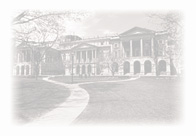Osgoode Hall
A tradition of change
In 1828, when the Law Society of Upper Canada purchased the six-acre lot to build Osgoode Hall, the property was just outside of what was then the Town of York. The original building was completed in 1832 and named after William Osgoode, the first Chief Justice of the province.
The Law Society agreed to house the Superior Courts of Justice of the province at Osgoode Hall in 1846. In 1874, it transferred the central and west portions of the building to the government, freeing itself from its obligations as landlord to the courts. The Law Society and the government of Ontario remain the co-owners of Osgoode Hall.
There have been more than fifteen major additions to Osgoode Hall, the latest completed in 1991. The result is a maze-like structure where navigation can be an adventure. Osgoode Hall Expansions
While the building has undergone numerous changes, the front façade remains essentially as it was in 1860. Later additions were accommodated by extending the building northward. Both co-owners of Osgoode Hall are conscious of its historical significance and great care is taken to maintain the character of the Hall while allowing it to function as a modern office building.
A diversity of spaces
Osgoode Hall houses the highest courts of the province of Ontario and related offices. It also accommodates the offices of the Law Society and facilities for continuing legal education. The building has a long history as an educational facility and it was the province’s only accredited law school until 1957. While the law school and, more recently, the Bar admissions program have been relocated, Osgoode Hall continues to host professional development programs.
The main doors lead into the Rotunda or Atrium, a space notable for its geometric tiled floor and elegant skylights. Ten courtrooms, some recently restored to their original splendour, convey the solemnity of the courts.
The Great Library houses the largest private collection of legal material in Canada but it was meant to be more than a repository. It was intended to be a room “whose lofty spaces might encourage the process of reasoned thought and the growth of the spirit.” Distinguishing features of the Library include the American Room with its old-world charm and the Main Reading Room with its stately columns, ornate mantle, etched windows and intricate ceiling.
The Benchers’ Wing, included on the tour itinerary, is the oldest section of the building. While it has changed over time, it retains much of its Victorian character. The mosaic floor, the staircase, the panelling, and the glass dome of the entry hall all provide a rare glimpse into a former era in Ontario’s history.
Convocation Hall, inspired by the medieval Inns of Court, was built as an examination room for law students. The stained glass windows completed in 1989 are the most prominent feature of the room. The windows represent various aspects of Canadian legal heritage and were donated by groups and individuals involved in the practice of law in Ontario.
Osgoode Hall is graced with portraits of past provincial Chief Justices and Treasurers of the Law Society. The works were executed by well established artists of their day and the collection in many ways reflects the history of Canadian portrait art.
Separating Osgoode Hall from the bustle of Queen Street is a handsome cast iron fence that was completed in 1867. The so-called ‘cow-gates’ were based on the design of cattle guards or ‘kissing-gates’ meant to keep out grazing animals. Toronto folklore has it that the gates were meant to repel creatures ranging from cows, plump lawyers and judges, to baby carriages. It is more likely that they were the result of Victorian fashion, the architect’s (William Storm) wish to have a fence to match his grand building, and a threatening political climate south of the border.
The Law Society
The Law Society of Ontario was founded in 1797 and is one of the oldest professional organizations in North America. With over 57,000 lawyer members, the Society is the largest Bar in Canada.
The main function of the Law Society of Ontario is to ensure that all persons who practise law or provide legal services in Ontario are competent, follow proper procedures and behave ethically. The Law Society was created to regulate lawyers but its mandate has been broadened since May 1, 2007, to regulate providers of all legal services, including independent paralegals.
The Law Society provides a variety of services to help the public access legal services and information, including a lawyer and paralegal referral service, an online directory of licensees, including their practice status, and a client compensation fund. The Society also offers continuing education, practice management, and substantive information services to assist lawyers and independent paralegals in their practice of law and the provision of legal services.
For more information about the Law Society of Ontario, visit: www.lso.ca.